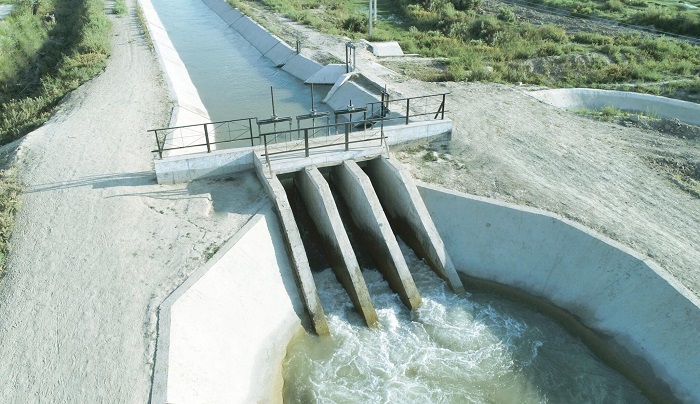The World Water Week, 25-29 August 2024, is being observed with the theme ‘Bridging Borders: Water for a Peaceful and Sustainable Future’.
As a matter of fact, the scarcity of water in many countries has reached the level where we should mark every day is the World Water Day. — The choice is stark: Life, or No Life.
https://www.worldwaterweek.org/
We are producing here an article authored by Kawa Baha, the SMEC Central Asia Regional Lead:
Each year, World Water Week champions cooperation across sectors and boundaries to advance global water security and quality. This year’s theme, Bridging Borders: Water for a Peaceful and Sustainable Future, emphasises the need for collective efforts to address the world’s greatest water-related challenges.
A major focus for this year’s event will centre on ecosystems and climate resilience, and the importance of holistic and cooperative strategies in tackling water issues. Central Asia, renowned for its vast landscapes and rich cultural heritage, is particularly affected by these challenges. The region is experiencing significant climatic and environmental pressures that demand a robust and multifaceted response from the engineering sector, complemented by regulatory and policy interventions from governments.
In line with the United Nations Sustainable Development Goals (SDGs), the engineering sector in Central Asia is driving progress towards a more climate resilient future for the region.
Climatic and environmental challenges in Central Asia
Central Asia faces pressing climatic and environmental challenges, exacerbated by global warming and rising temperatures. These changes have accelerated the melting of glaciers, which are vital water sources for the region. Combined with the desiccation of areas such as the Aral Sea basin—which impacts 60 million people, or 81% of the population—and the resulting dust, salt deposits, and sandstorms, the impact has been profound, leading to severe ecological and socio-economic consequences.
Historically, the region has struggled with low environmental stewardship, exemplified by the accumulation of household and industrial waste and inefficient water use (with costs at $25/m³/year compared to the global average of $19/m³/year). Agriculture, biodiversity, and water supply are particularly vulnerable, with land and water degradation impacting food security and livelihoods. Biodiversity loss further destabilises ecosystems, while increased water runoff and reduced inflow pose risks to humans and wildlife.
To address these challenges, Central Asian countries are taking a bilateral approach, that starts with increased participation in the global climate agenda. Crucially, community involvement in disaster risk reduction strategies and policies form an essential part of this action. Embracing Environmental, Social, and Governance (ESG) standards and green financing mechanisms will further drive sustainable development, aligning with SDG 13, which calls for urgent action to address climate change and its impacts.
In parallel with increased climate agenda participation, the adoption of climate-resilient design practices and modernisation of infrastructure will continue to advance the regions ability to mitigate adverse environmental and social impacts, safeguarding the future of Central Asia.
The water canals rehabilitated as part of the IDIP-2 Project in Kazakhstan will provide water to 10,000 farmers at the command area of 113,000 ha.
Developing the water sector
Modernising the water sector is an essential step towards ensuring clean water supply and sustainable management of water resources in Central Asia, in line with SDG 6. The region’s governments are driven by the need to enhance access to water and sanitation due to the deteriorating state of many Soviet-era water systems. Aging infrastructure has resulted in inadequate water availability for households. For instance, in Kazakhstan, about 51% of the water grid is deemed substandard. With approximately 45% of the population residing in rural areas and nearly 30% of the economically active population employed in agriculture, the need for improved water infrastructure is particularly urgent. According to the Statistics Committee of the Ministry of National Economy, out of 8.5 million employed individuals, 2 million work in agriculture.
To address these pressing issues, countries are actively taking steps to develop improved water supply systems. Kazakhstan’s draft Comprehensive Water Sector Development Plan for 2023-2025 includes the establishment of a scientific centre for water resources management. Similarly, Tajikistan has initiated the development of a National Water Supply and Sanitation Program, set to run until 2030. These initiatives are vital for improving water infrastructure and ensuring best water management practices.
Tajikistan’s Dushanbe Water Supply and Sanitation Project aims to rehabilitate water supply and sewerage facilities to enhance resilience against climate change and strengthen the institutional capacity of SUE “Dushanbevodokanal”. This program will provide access to drinking water for 400,000 residents of Dushanbe, improve environmental sanitation in urban areas and reduce water losses.
Other countries in the region, including Uzbekistan, have also embarked on the path of disaster-resilient, climate-adaptive, and environmentally friendly development projects. SMEC has emerged as a reliable partner in this journey toward environmental and climate-resilient stewardship. /// nCa, 26 August 2024
